Another long Winter in Europe is over, yeeii! And, for us, that means time to travel! To start our 2023 traveling season, we picked beautiful Greece! We checked Google Maps to calculate the distance between our starting point and the first Greek city on our way and it said 8 hours drive. We laughed because Google’s time does not match PackAndGo’s time. We barely travel straightforwardly to a point. We prefer to stop every time we see something interesting on the map. So, we knew this drive would take us much longer, weeks maybe haha, and that sounded great for us!
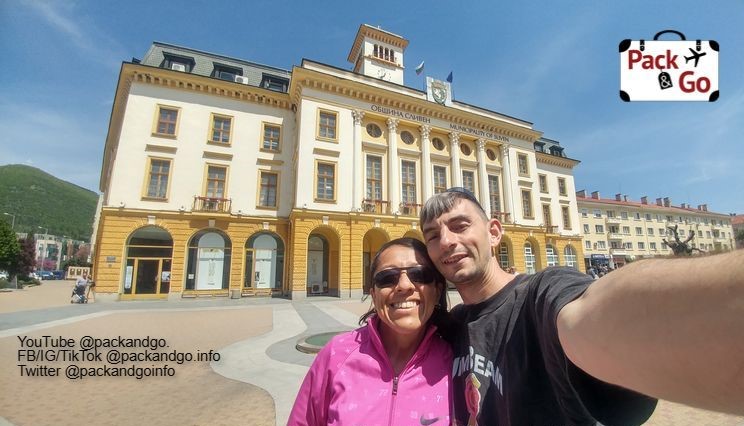
So we left home and the first stop of this new adventure was Sliven, Bulgaria, and its surroundings. Why nobody visits Sliven? What to see in Sliven? Was it good or not? Is it worth visiting it or you should better skip it? Find it out here!
Where is Sliven (Сливен)?
If you see a map of Bulgaria and take the capital Sofia as a reference, you will find Sliven on the east, 300 km away. It is 110 km away from Burgas, 110 km from the border with Turkey (Lesovo-Hamzabeyli), and 150 km approximately, from the border with Greece (Kapitan Petko Voyvoda-Ormenio). Based on those similar distances, this Bulgarian city looks very centric, so why nobody visits Sliven?
What is Sliven famous for?
While searching for what to do in Sliven, we discovered it is famous for its deep history and natural beauty. It is also known as the "City of a Hundred Voivodes" and the "City of the Blue Stones”.
The name "City of a Hundred Voivodes" has a historical origin. “Voyvoda” (Old Slavic) was an exclusive title reserved solely for brave military warlords or leaders in Bulgarian history. In the 19th century, during Ottoman rule, Sliven was an important spot of revolutionary activity. It was a center of the haiduk movement, a popular form of resistance against Turkish occupation. Commonly, haiduk bands or groups were integrated by one hundred men each and a leader. Many renowned freedom fighters, and defenders of the national identity, with the "Voyvoda" title, were from Sliven or operated in its region. This is how Sliven earned its reputation as the "City of a Hundred Voivodes". It sounds epic, right?
Famous voivodes (voyvodi, in Old Slavic) and revolutionaries from Sliven:
-
Hadzhi Dimitar
-
Panayot Hitov
-
Georgi Rakovski
-
Indzhe Voyvoda
-
Zlati
-
Kara Sabi
-
Filip Totyo
-
Stefan Karadzha
-
Tanyu Voyvoda
-
And many more.
The name “City of the Blue Stones” has its origin in the natural landmarks that beautifully frame the city. The Blue Stones or Sinite Kamani (Сините камъни) is a range of striking cliffs and rock formations located in the eastern part of the Balkan Mountains. These rocks feature different blue and green tonalities that together create a mesmerizing and unique view. The green color is not strange considering the vast flora of the whole region, but the blue one is created due to the presence of a mineral called vivianite. These natural formations have become deeply associated with Sliven’s identity.
By the way, if you like amazing rock formations you could also enjoy reading about Belogradchik Rocks near Vidin, Bulgaria.
As you see, Sliven’s past was epic, synonymous with bravery, warfare, and awesome nature. Is Sliven’s present as impressive as before? Or did everything die just like the voivodes?
What to visit in Sliven?
The location of today's city has been inhabited for millennia. Sliven’s history goes back to the Thracian’s time and from there, you can walk through different history layers involving Romans, Slavs, Greeks, and the First and Second Bulgarian Empires.
Besides, here, the first Bulgarian factory was established in 1834, by Dobri Zhelyazkov. This marked the beginning of industrial development in Bulgaria. Sliven has a long-standing tradition in the textile, machinery, glass, electrical engineering, and food industries. This means, if you are into history and museums, there are many you can visit in Sliven.
List of the best museums in Sliven:
-
Regional historical museum, "Dr. Simeon Tabakov".
-
Museum of the textile industry.
-
Hadji Dimitar House-Museum.
-
Dobri Chintulov House Museum.
-
House-museum of the Old Sliven Popular Customs.
Ok, and besides museums, what to visit in Sliven? Well, these are the places we liked the most.
The monument of Hadji Dimitar
This national hero was born in Sliven. The monument is located in the heart of the city. The figure of the voivode is about 4 meters high and the whole monument is 12 meters high. Locals have the tradition to offer flowers in this monument on city holidays or weddings.
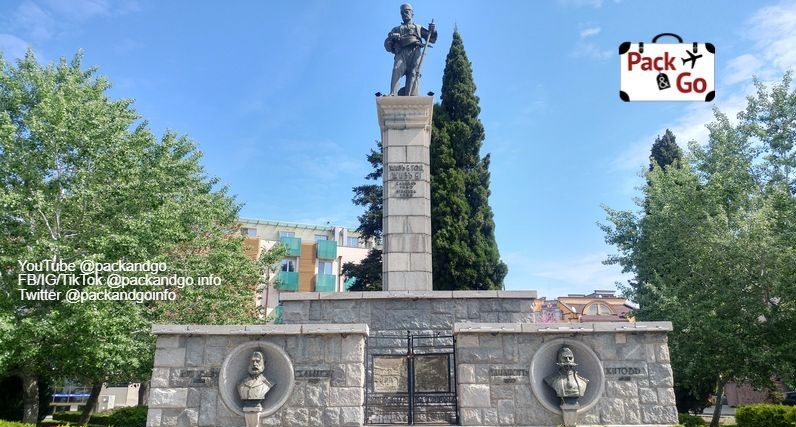
Why did we enjoy a monument? Well, since the beginning we read about the famous voivodes of Sliven. It was nice to find a very famous one (his monument) just a few streets away from our accommodation hahaha. Besides, the monument is located in a very pleasant space with benches where you can stop and have a cool break. A simple pleasure? Yes! We liked it and we took some minutes here to check the map and choose our next stop: Sliven market.
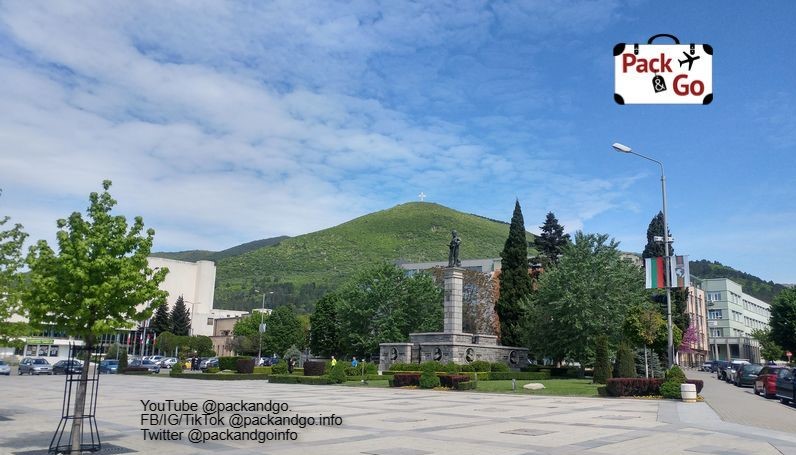
Sliven market
We like to visit markets because they are a cool experience for the senses. All those aromas and colors of fresh fruits, herbs, and species hit your nose and eyes in such a way! Then you buy and your touch and taste get thrilled. This time, M discovered very nice stuff, some delicious spices! Samardala (самардала) and Trahana (трахана).
What is Samardala (самардала)?
Samardala (самардала) or Bulgarian honey garlic in English, a traditional Bulgarian spice mix that we haven’t seen before. Samardala is a herbaceous plant, endemic to the Balkan Peninsula that people dry, crush and combine with salt. It has a very attractive and intense green color and a garlic aroma. It seems to be very popular for cooking especially in the region of Strandja, Sliven, Stara Zagora, and Kazanlak.
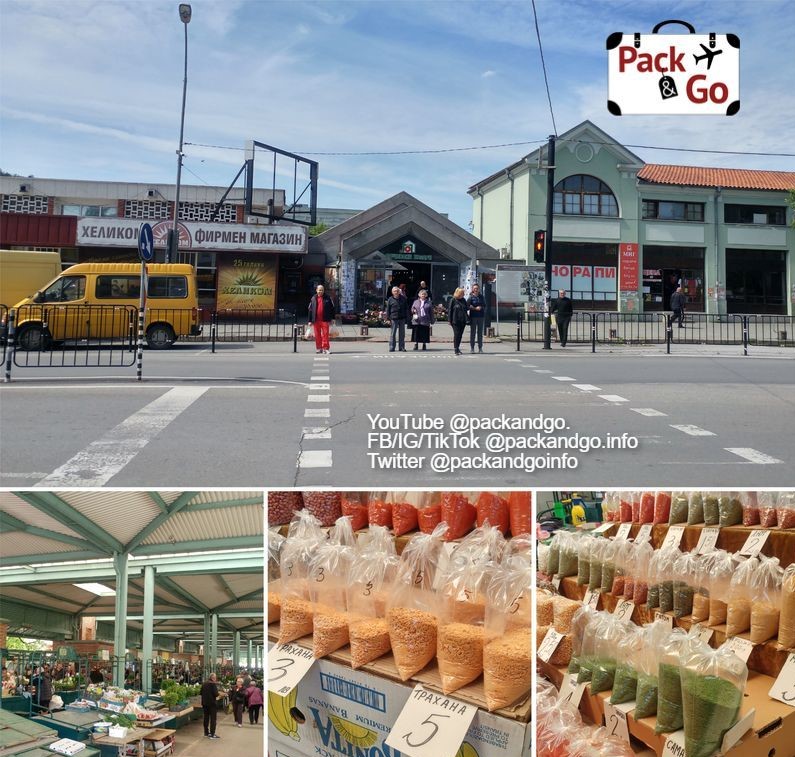
What is Trahana (трахана)?
Trahana (трахана) is a spice mix from the Arabic countries. It is a mixture of flour with vegetables such as pepper, tomato, carrot, celery, and chickpea. Vegetables are boiled, ground, mixed with flour, yeast, and left to ferment. Once ready, it gets dried, and crushed until it becomes an aromatic, orange powder. It is very used in many Balkan countries and the Middle East.
We bought both and we are dying to cook with them! So, Sliven market can surprise you! Give it a shot!
The clock tower
We kept walking until we reached the center and there, the clock tower is. This landmark is more than 200 years old. In the past, it was used as an observation post for firefighters. It also had a bell. When the new clock tower was built in Sliven, the clock mechanism and the bell were moved there.
The Old Elm
Sliven hosts a tree that is more than 1,300 years old. It has become another symbol of the city. The Old Elm is in the center of Sliven, nearby the municipality. There, we read that in 2013 there was a national competition called “Tree with Root” and this tree was the winner. It was also awarded the “European Tree of the Year 2014”.
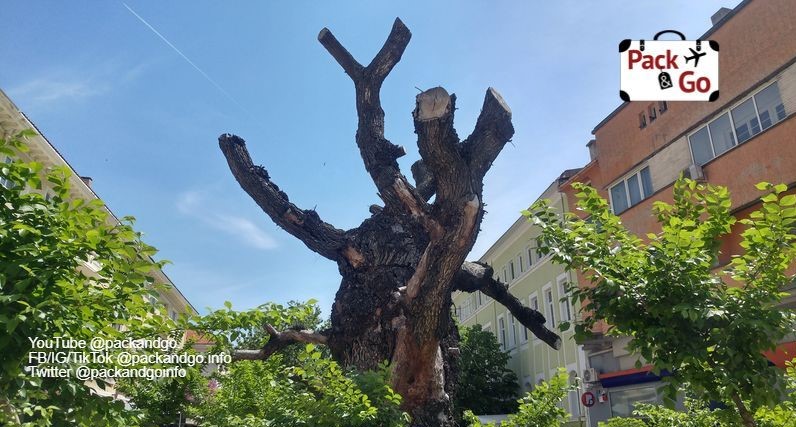
Sliven’s municipality
Sliven’s municipality building is a big one, old-style, and well-preserved. It is impossible not to see it while exploring the center. Around the municipality there are benches and the street is very wide so people gather for multiple purposes. You can simply have a break there and enjoy people-watching. We got hungry so we decided to stay there for eating a very tasty "lodka" bread.
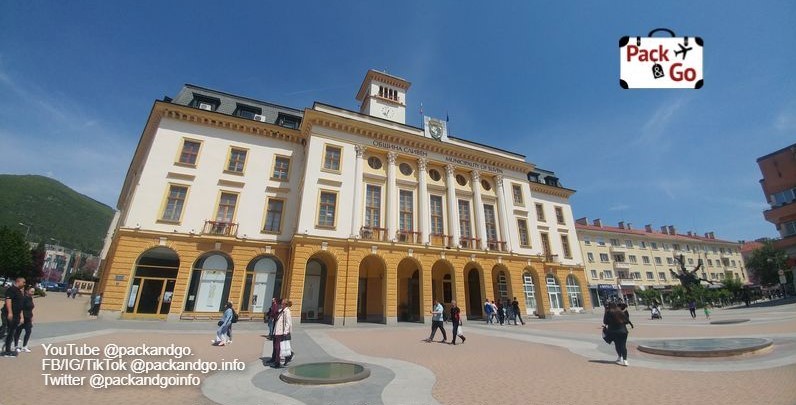
The vibe of Sliven, contrary to what you can expect of an industrial city, was calm and nice. The center has restaurants, coffee and souvenir shops, landmarks, and places to visit. So we wondered again why nobody visits Sliven.
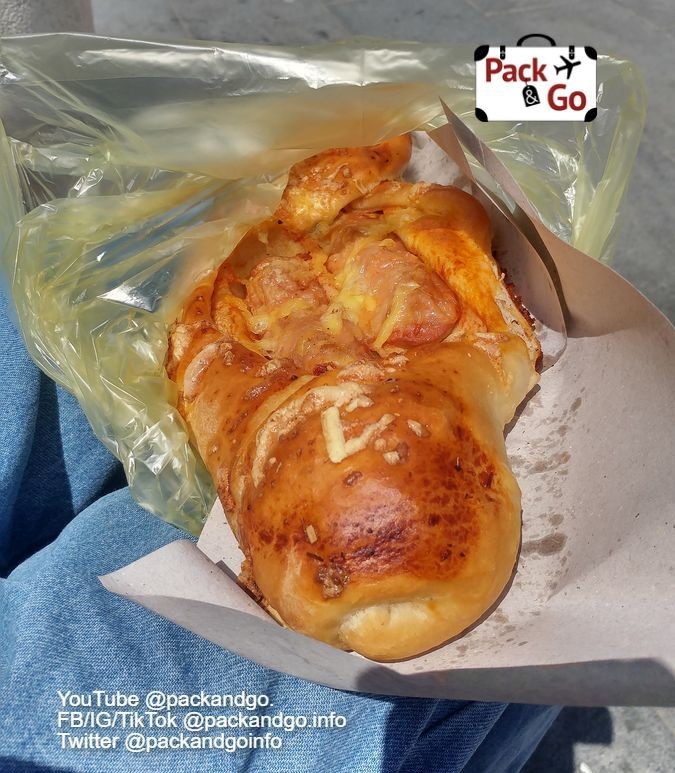
Regional historical museum, "Dr. Simeon Tabakov"
With the happy belly after that "lodka" bread, we felt ready for a museum. If you want to go deep in the history of Sliven and the whole region this is the place. There is a Thracian gold mask from the 4th century BC, many gold ornaments, a seal of Prince Boris, a torso of the God Asclepius, glass vials used to collect the tears of professional mourners, women’s leather shoes from the Roman times, vestiges of the Tuida fortress, etc.
Tuida fortress
You will find the Tuida fortress on the Hisarlaka hill, in the northeastern part of the city. The fortress is located at the foot of the Blue Stones and was used for centuries, during the Roman Empire, Byzantium, and medieval Bulgaria. From the north part of the fortress, you can see the cliffs of the Sliven Blue Stones Natural Park. From the south, you will have a view of the lower neighborhoods of Sliven.
From the 5th to the 15th centuries, Hisarlaka Fortress was the administrative and religious center of the region. The fortress was built over ten centuries by different rulers. During your visit, you can see the walls, gates, towers, and remains of Tuida’s buildings, two pedestals made of marble dedicated to the gods Zeus and Apollo, and more.
Museum of the textile industry
What? Another museum? Hahaha Honestly, we prefer outdoor spaces but ok, the textile industry is a big thing for Sliven and we could learn something. So yes, we got into this museum and walked through centuries of development of the textile industry, some interesting machines, and demonstrations. Can you believe that in the 7th century BC, already existed a loom which weaved one meter of fabric in only 5 hours? What about a loom whose technology contributed to the creation of the first computer? It is a loom created by Joseph Marie Jacquard, in 1804. It weaved fabrics with intricate patterns using punched cards. Later on, Charles Babbage borrowed the idea to create the first computer. Interesting, doesn’t it?
Other places you can visit in Sliven.
We did not visit the following spots, so if you go, tell us your opinion, please! And if you visit other voyvods’ houses (museums) or something else we missed, your recommendations are welcome!
| Follow PackAndGo.info at: | |
| YouTube | @packandgo. |
| @packandgo.info | |
| X | @packandgoinfo |
| @packandgo.info | |
| Bluesky | @packandgo.bsky.social |
| TikTok | @packandgo.info |
House-museum of the Old Sliven Popular Customs
It is a Revival Sliven house from the beginning of the 19th century, that hosts an ethnographic exhibition.
Hadji Dimitar House-Museum
It is hosted by the father’s inn of the national hero. His native house is next door and was built by his grandfather in the late 18th century.
Factory of Dobri Zhelyazkov
Part of the factory established by Zhelyazkov in 1834 has been preserved. As we mentioned before, this factory meant a lot for the industrial development of the region and Bulgaria, in general.
What to visit around Sliven?
Karandila (Карандила)
Without a doubt, this is a place you should not miss! It is within the Blue Stones Natural Park (Сините камъни), a beautiful area full of valleys, natural springs, waterfalls, cliffs, stones, and fresh air. You can get a great view from every corner!
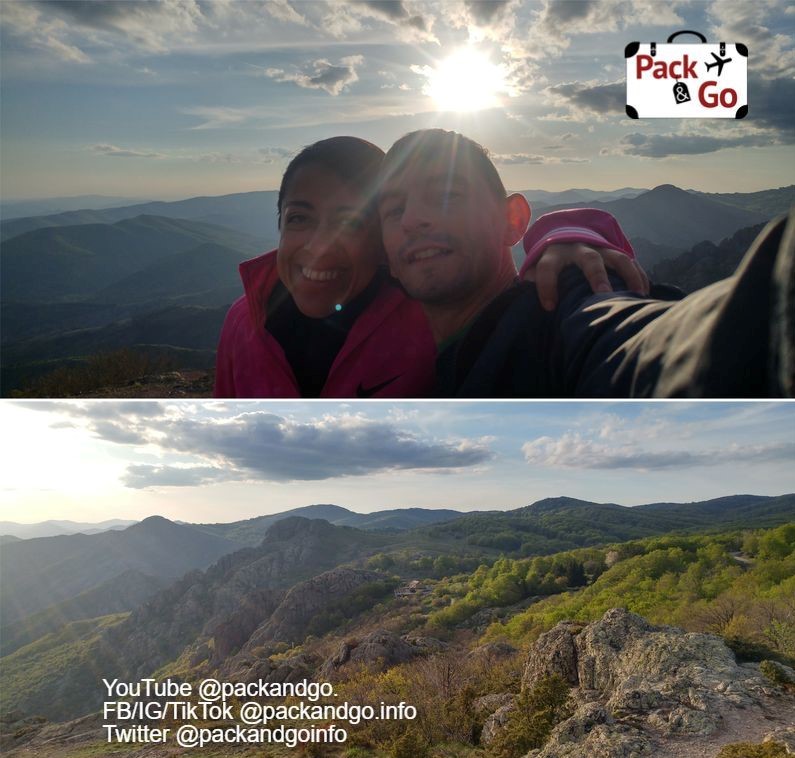
Karandila is one of the biggest attractions within the Natural Park. It is a hilltop located 1,050 m above sea level and the sights from there are a-we-so-me! There is a famous rock formation in Karandila called Halkata (Халката, meaning the ring). As the name suggests, it is a rock protrusion with a hole in the center. And there is a myth that says, you should be granted your most sincere wish if you pass through the ring. Of course, we do not believe in myths, but we wished and passed through the ring, just in case! Don’t judge us! Hahaha. You can explore or just choose a rock to sit on and enjoy your favorite view. It is a place we enjoyed a lot!
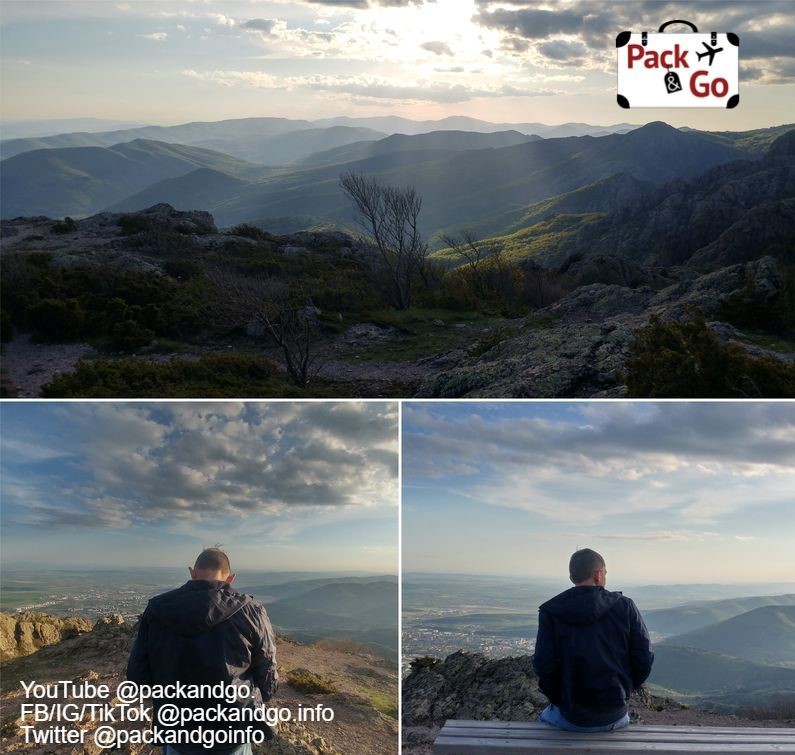
You can look for different hiking choices because the Blue Stones Natural Park is large. Easier or harder ones, you decide. One very common hiking goal is to reach Halkata.
Karandila lift or cable line (Пътническа въжена линия „Сливен – Карандила“)
There is another way for you to enjoy the amazing views of the Blue Stones. A lift or cable line is operating in the area, so without physical effort, you can have 20 minutes of really nice natural views and fresh air, while “flying” on a chair over the beautiful Blue Stones Natural Park near Sliven. The information on the Internet is in Bulgarian, but we will share the essential details with you now.
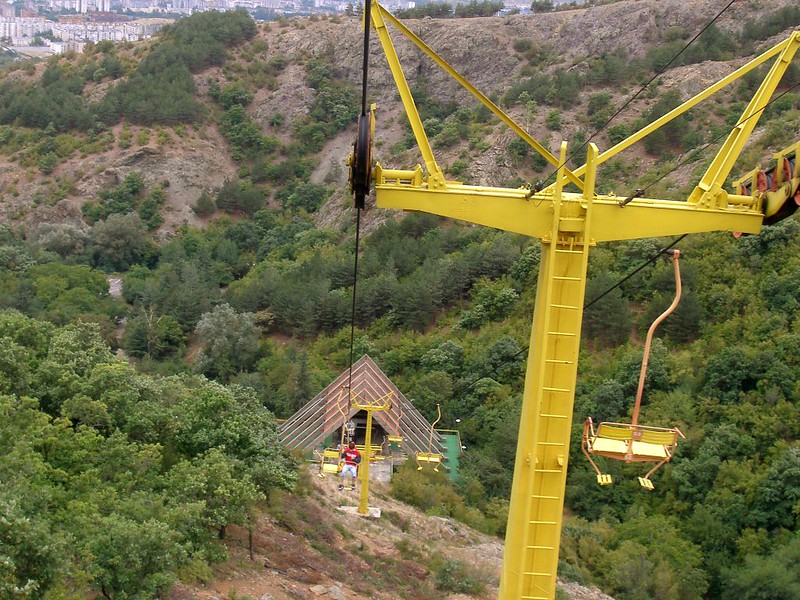
It is not open during the whole year. This 2023, it started operations on June the 8th.
Working hours: from 8.30 a.m. to 4.30 p.m. Last boarding at 4.00 p.m. (one way). The schedule varies according to the season. During Summer, the cable line operates until 5:30 p.m., with the last ascent at 5:00 p.m.
Monday: from noon.
Length along the slope: 1,895 m.
Elevation: 597 m. Lower station altitude - 390 m. Upper station altitude - 987 m.
Speed: 1.6 m/s.
Travel duration: 20 minutes.
Starting point to the lower cable line station: Kapatazh locality
From the information center of the "Blue Stones" Nature Park - 10 minutes.
From the city of Sliven - by urban bus or on foot.
Starting point from the upper cable car station: Slancheva Polyana locality
From Karandila Hut and Karandila Hotel (tourist house) - 30 minutes.
Prices (2023): One-way, BGN 10.00 (€5). Two-way: BGN 15.00 (€7.68). Children under 7 years old travel for free with an accompanying adult.
Kotel Old Town
Approximately 65 km northeast of Sliven, located in the middle foothills of the Eastern Stara Planina (Стара Планина), in the flat part of a mountain valley and Demir Kapia (an important geographically historical pass which witnessed many battles), you find Kotel (Котел).
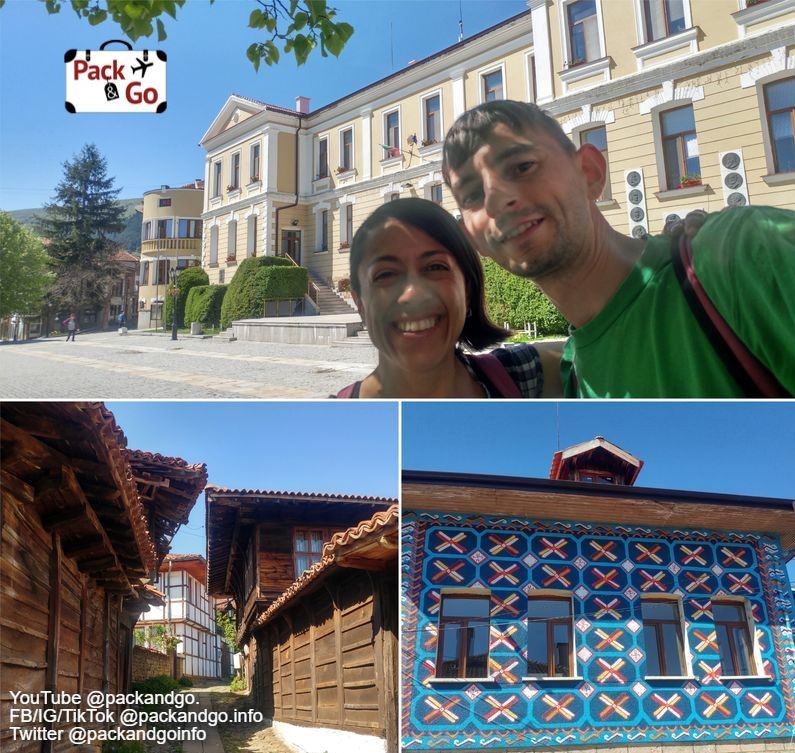
Our objective was to visit the Old Town, located on the outskirts of this mountain town. The place is an icon of the Liberation movement of the 19th century and the Bulgarian Revival period (18th and 19th centuries). What is interesting is the architecture of the houses. You walk in meandering, narrow stone-paved streets while seeing preserved and restored wood-covered houses from the Revival period. Some of the old public buildings and houses have become museums, shops, restaurants, coffee shops, or guest houses. And many of them are just normal houses that have been restored following the same old style of the area. So it is a very alive ethnographic complex! It is not a recreation, normal people live there and do their daily activities surrounded by curious tourists like us hahaha. After walking around, we stopped to get a coffee and a beer in the quiet, clean, and cute center, to keep enjoying this sort of gap between two dimensions, two very different times!
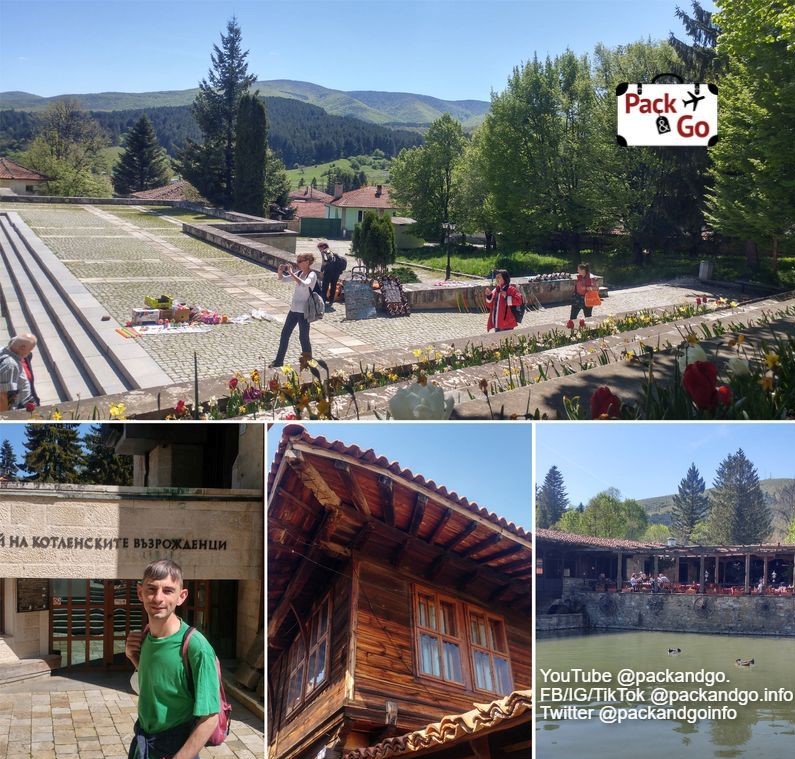
If you get in love with this place, the good news is there are houses on sale. Yes, you can live there if you buy a house.
By the way, if you are heading north-west, you can go and check out Dryanovo. It is a really cool little town.
Zheravna
Zheravna (Жеравна) is a village located only 15 km (south) away from Kotel. It offers you another architectural sample of approximately, 200 wooden houses from the Bulgarian National Revival period. Commonly, they are two-story wooden houses bordered by heavy stone walls. The cobblestone alleys you walk in are nice and lead you to popular sights like the church of St. Nicholas opened in 1834, the museum houses of Rusi Chorbadzhi, a known merchant in the 18th century, and Yordan Yovkov, a respected writer born in 1880.
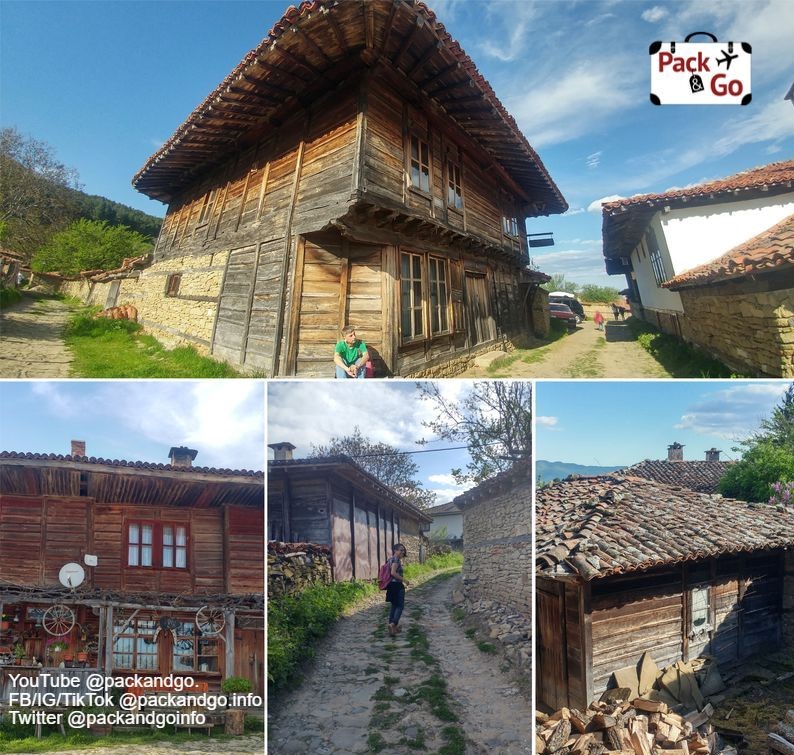
Why nobody visits Sliven?
Now you know the things to do in Sliven and its surroundings. Why nobody visits Sliven? Because Sliven attractions are good, but not “impressive”. As tourists, we all look for different things to enjoy. Most of the people who only have a free weekend or several days to travel, look only for impressive things to visit. Otherwise, they feel it’s not worth it. In our opinion, that is why Sliven does not appear as a top Bulgarian destination.
Do we recommend visiting Sliven, Bulgaria?
Yes, we do! Sliven offers you a relaxing and nice vibe. Its center is a good example of that. It can be a good choice for digital nomads, families or couples to spend a relaxing weekend. Sliven has all the necessary amenities you expect from a city, accommodation, restaurants, cafes, bars, art galleries, supermarkets, tourist attractions, etc. The nature around the city is a big plus and the mean to balance your holidays. Yes, you can enjoy the comfort of a city and combine it with a more challenging adventure exploring the Blue Stones Natural Park. This is exactly what we did. If such a plan suits you, go ahead, just pack and go!
Young and more adventurous travelers directly go to the Blue Stones Natural Park. That is fine! But if Sliven is on your way and you have time for enjoying simple pleasures, give it a shot! We did it! And it was a nice experience.
Based on the season you visit Sliven, you also can find film, music, or folk dance festivals, concerts, art exhibitions, medieval events, the gathering of Karakachans (traditional nomadic shepherds), and more.
Extra note: treat yourself to visiting one of the many bakeries in Sliven. They have very tasty specialties, like those delicious "lodka" we ate! There is one “crocodile” we also liked! They have some bread we have not seen in the Northern cities of Bulgaria.
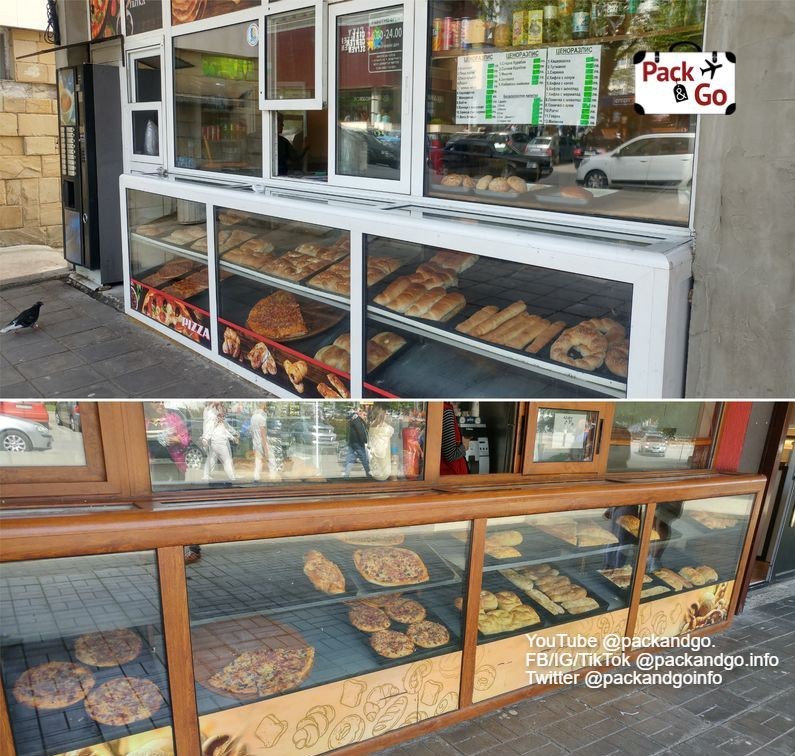
How long should you stay in Sliven?
Honestly, you can spend here as much time as you prefer. You can stay a day or a weekend exploring the attractions within the city. You can plan a longer stay if you visit the cool surroundings. Sliven can be a comfortable base to further exploration of the region that is rich in nature.
| Follow PackAndGo.info at: | |
| YouTube | @packandgo. |
| @packandgo.info | |
| X | @packandgoinfo |
| @packandgo.info | |
| Bluesky | @packandgo.bsky.social |
| TikTok | @packandgo.info |
Conclusion
Sliven and its surroundings were a great beginning for our new 2023 adventure. Greece, our goal, is still far. Follow us and let’s discover together the next stop!
